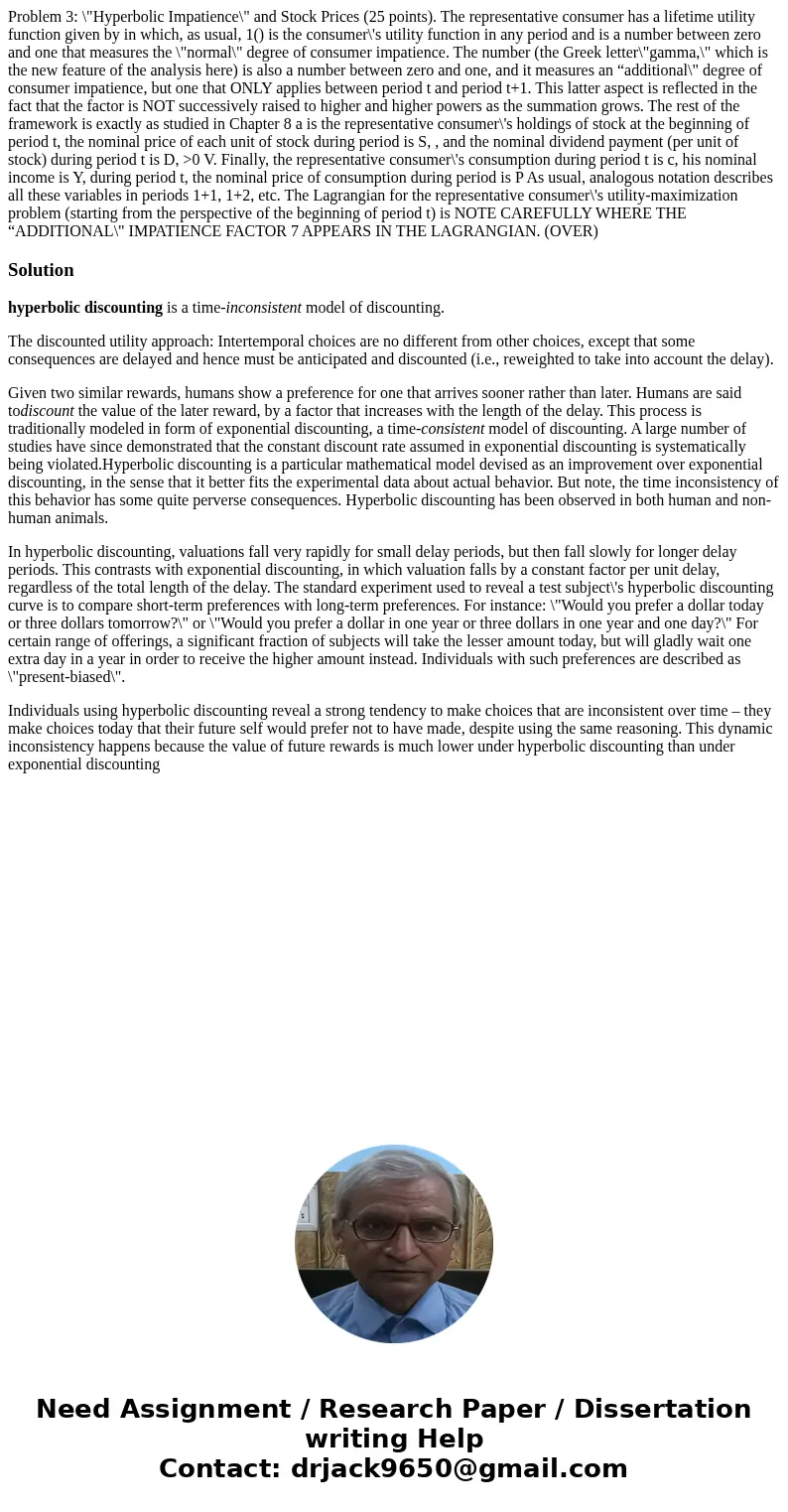Problem 3 Hyperbolic Impatience and Stock Prices 25 points T
Solution
hyperbolic discounting is a time-inconsistent model of discounting.
The discounted utility approach: Intertemporal choices are no different from other choices, except that some consequences are delayed and hence must be anticipated and discounted (i.e., reweighted to take into account the delay).
Given two similar rewards, humans show a preference for one that arrives sooner rather than later. Humans are said todiscount the value of the later reward, by a factor that increases with the length of the delay. This process is traditionally modeled in form of exponential discounting, a time-consistent model of discounting. A large number of studies have since demonstrated that the constant discount rate assumed in exponential discounting is systematically being violated.Hyperbolic discounting is a particular mathematical model devised as an improvement over exponential discounting, in the sense that it better fits the experimental data about actual behavior. But note, the time inconsistency of this behavior has some quite perverse consequences. Hyperbolic discounting has been observed in both human and non-human animals.
In hyperbolic discounting, valuations fall very rapidly for small delay periods, but then fall slowly for longer delay periods. This contrasts with exponential discounting, in which valuation falls by a constant factor per unit delay, regardless of the total length of the delay. The standard experiment used to reveal a test subject\'s hyperbolic discounting curve is to compare short-term preferences with long-term preferences. For instance: \"Would you prefer a dollar today or three dollars tomorrow?\" or \"Would you prefer a dollar in one year or three dollars in one year and one day?\" For certain range of offerings, a significant fraction of subjects will take the lesser amount today, but will gladly wait one extra day in a year in order to receive the higher amount instead. Individuals with such preferences are described as \"present-biased\".
Individuals using hyperbolic discounting reveal a strong tendency to make choices that are inconsistent over time – they make choices today that their future self would prefer not to have made, despite using the same reasoning. This dynamic inconsistency happens because the value of future rewards is much lower under hyperbolic discounting than under exponential discounting

 Homework Sourse
Homework Sourse